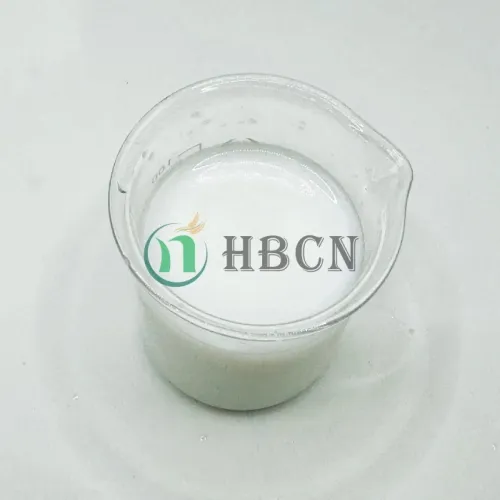
Dec . 02, 2024 01:24 Back to list
fungicide for phytophthora root rot
Effective Fungicides for Phytophthora Root Rot
Phytophthora root rot is a destructive plant disease primarily affecting a wide range of crops, ornamental plants, and trees. Caused by Phytophthora pathogens, including Phytophthora cinnamomi and Phytophthora parasitica, this disease can lead to significant crop losses if not managed effectively. The disease manifests itself through wilting, yellowing of leaves, and ultimately root decay, which severely hampers a plant's ability to absorb nutrients and water. In many cases, traditional management strategies such as crop rotation and soil conditioning are not sufficient to control this disease, which is why the application of fungicides becomes crucial.
Fungicides are chemicals designed to kill or inhibit the growth of fungi and are a vital tool in the arsenal against Phytophthora root rot. When choosing the right fungicide, there are several factors to consider, including efficacy, residual activity, application method, and the risk of resistance development. Below, we explore some of the most effective fungicides for managing Phytophthora root rot.
1. Metalaxyl and Mefenoxam
Metalaxyl is a systemic fungicide that is particularly effective against Phytophthora species. It works by inhibiting the production of ribonucleic acid (RNA), effectively stopping fungal growth. Mefenoxam is a more refined cousin of Metalaxyl and has enhanced activity against Oomycetes, the group that includes Phytophthora. Both of these fungicides are often used as soil drenches or seed treatments and provide good control when applied early in the disease cycle.
2. Propamocarb
Propamocarb is another systemic fungicide that can be used to combat Phytophthora root rot. It functions by disrupting the cellular membrane integrity of the pathogen. It is often effective in controlling root rot in crops such as tomatoes and potatoes. Propamocarb works best in combination with other fungicides to broaden its effectiveness and reduce the likelihood of resistance development.
3. Phosphorous Acid
Phosphorous acid is a unique fungicide that not only acts as a systemic fungicide but also enhances the plant’s natural defense mechanisms. When applied, it is absorbed by the plant and can translocate to various parts, providing long-lasting protection against Phytophthora species. Phosphorous acid products are effective in both preventive and curative applications, making them versatile in management strategies.
fungicide for phytophthora root rot

4. Fosetyl-Al
Fosetyl-Al is a fungicide that works similarly to phosphorous acid and is known to be effective in controlling Phytophthora root rot in numerous crops. This compound acts as a fungistatic agent that inhibits fungal invasion. It is important to apply Fosetyl-Al preventively to achieve better control over the disease.
5. Biological Alternatives
In addition to traditional fungicides, biological control agents have gained traction as eco-friendly alternatives. Products containing beneficial microorganisms such as Trichoderma species can help suppress Phytophthora through competition and the production of antifungal compounds. While biological fungicides may not provide the same level of control as chemical options, they can be integrated into a comprehensive disease management plan, enhancing soil health and bioactivity.
Application Considerations
When using fungicides for Phytophthora root rot, it is essential to follow the manufacturer's guidelines for application rates and timing. Fungicides should be applied preventively, especially in areas with a history of root rot problems. In addition, combining fungicides with cultural practices such as improving drainage, avoiding overwatering, and maintaining healthy soil can significantly enhance disease management efficacy.
Conclusion
Phytophthora root rot poses a serious threat to agriculture and horticulture. The careful selection and application of effective fungicides, along with integrated pest management practices, can significantly reduce the incidence and severity of this disease. By being proactive and informed, growers can protect their crops and ensure sustainable agricultural productivity in the face of this challenging pathogen.
-
Insecticide Spirotetramat 11% + Thiacloprid 11% SC at Good Price
NewsJul.30,2025
-
Best Abamectin SDS - Premium Quality & Reliable Safety Data
NewsJul.29,2025
-
Agrochemicals Pesticides Solutions for Sustainable Farming
NewsJul.29,2025
-
High-Quality Tebuconazole Fungicide for Crop Protection at Best Price
NewsJul.29,2025
-
Chlorfenapyr 8% + Clothianidin 20%SC Pesticide Mixture for Effective Pest Control
NewsJul.28,2025
-
Best Azoxystrobin Difenoconazole Supplier for Crop Protection
NewsJul.28,2025
